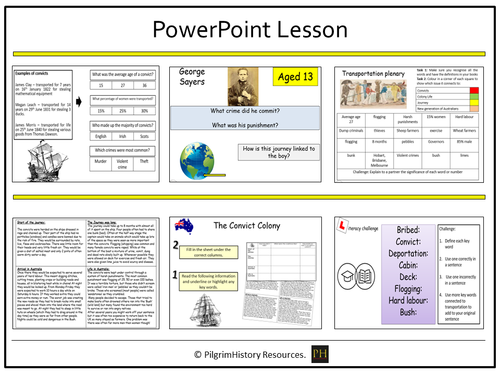


The British Empire
This lesson has been designed to look at specific countries which were part of the British Empire.
Claimed by Captain James Cook in 1768, students study how and why the British used Australia as a penal colony.
Using a real life example of a young boy sent there for petty crimes, students analyse his and others stories from the start of the voyage through to life in the colony.
They track and ultimately decide the worst aspects for the convicts.
There is lots of video footage to consolidate understanding and the plenary evaluates the conditions and lives led by the convicts
The lesson comes with suggested teaching and learning strategies and are linked to the latest historical interpretations, video clips and debate.
The lesson is fully adaptable in PowerPoint format and can be changed to suit.
Something went wrong, please try again later.
The lesson is interesting but I am confused about the story of George Sayers who was apparently transported in 1900 however the final transportation occurred in 1868? I can't find any information about him online and would be interested to know where the story has came from as it seems inaccurate.
This is a superb resource, with an interesting starter activity, great engaging main activities and a thoughtful plenary, saving me lots of time! Thank you!
Report this resourceto let us know if it violates our terms and conditions.
Our customer service team will review your report and will be in touch.